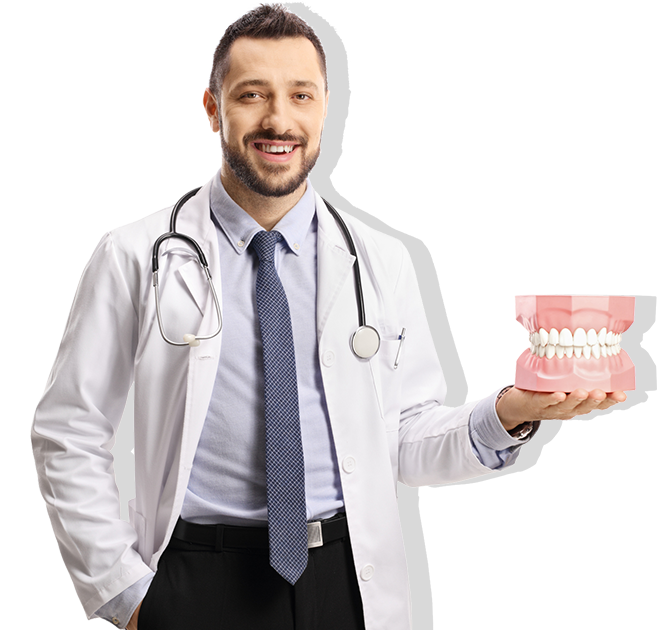Post Treatment Care
Bleeding
- A gauze pad has been placed on the extraction site to control bleeding. Moderate pressure should be applied for one-half hour. If bleeding continues, place new gauze for 1 hour. If placing new gauze, first wet it with water, squeeze out the excess water and bite on it with steady, firm pressure on the extraction site. For proper healing, it is important for a good blood clot to form.
- Keep your head elevated with pillows to control bleeding.
- If bleeding is not easily controlled in the first two hours, place a teabag under running water, squeeze out the excess water, and bite on it with firm, steady pressure on the extraction site. (The tannin in the tea will help to constrict the blood vessels in the area and stop the bleeding).
- Red tinged saliva is normal for a few days following surgery and is not indicative of bleeding. Gauze placed against the wound will draw blood from the clot and this, likewise, is not a sign of bleeding.
- Place an old towel over your pillow for the first night to reduce risk of staining.
- If the bleeding persists, contact the office.
Control of the Blood Clot
- After the surgery, a blood clot forms protecting the extraction socket. If the blood clot is lost this may cause a “dry socket”.
- To keep the clot intact, avoid touching the extraction site with your tongue or fingers.
- DO NOT: Drink liquids through a straw, spit vigorously or smoke for 5 Days as the suction created by these activities could result in a “dry socket.”
- Blowing your nose or sneezing violently can also dislodge the blood clot and impair healing, so if you have an upper respiratory infection or suffer from allergies, be sure to have the appropriate sinus medication on hand.
- Symptoms of a “dry socket” can present in the 2 weeks following an extraction, they include: throbbing into the ear, persistent ache, bad taste, a general feeling that the pain is getting worse after the third day, instead of getting better
Swelling
- Swelling is normal after any kind of surgical procedure and will peak 72 hours after the surgery.
- Ice packs may be helpful in reducing swelling. Apply ice for 20 minutes every hour for the first 24 hours.
- If no pre-extraction infection was present, heat may be applied after 3 days.
Anesthesia
- The local anesthesia may produce numbness for 2 -12 hours depending on the type used.
Hygiene
- It is important to continue to brush and floss your teeth. Brushing your tongue can help eliminate bad breath and unpleasant taste that are common following extractions.
- Avoid brushing directly over the surgical site until it has healed.
- Sutures may have been used to close the surgical site. If resorbable sutures are used, the sutures will dissolve on their own anywhere from 3-10 days. If non-resorbable sutures were used, they should be removed in the dental office in 7 to 10 days.
- Warm salt water rinses can start 24 hours following the procedure if desired. Gently rinse using 1/2 tsp. of salt to 8oz of water. Gently rinsing after meals will aid in keeping food out of the surgery site. Do not rinse vigorously as this will disturb the clot.
Diet
- You may eat soft foods (i.e. eggs, soups, noodles, ice cream, yogurt) after the bleeding has been controlled and the gauze has been removed.
- Avoid hard foods such as seeds, rice, nuts, chips, and popcorn.
- You may resume a normal diet in 3-5 days or as tolerated.
Activity
- Relax as much as possible and avoid all strenuous activities for the first 24 hours following surgery.
- By approximately 1 week after surgery, most routine activities may be resumed.
Pain
- Discomfort after an extraction is normal. Take all pain-relieving medication as prescribed. If possible, begin before the anesthetic wears off.
- If you were not given a prescription for pain medication, take 3 tablets (600mg) of ibuprofen (Advil, Motrin, generic) every 6hrs. If you are unable to take ibuprofen due to stomach upset or stomach ulcers, consult your dentist or physician for an alternative treatment.
- For children, the pain relievers of choice are children’s Tylenol or children’s Motrin.
Prescribed Medications
- You may be given narcotic pain medication after surgery –DO NOT DRIVE if you are taking such medication.
- If an antibiotic is prescribed it should be taken until gone unless otherwise instructed.
- Please eat when taking medications to prevent nausea.
Bony Edges
- Occasionally small slivers of bone may work through the gums during healing (4-6 weeks). They are not pieces of tooth and, if necessary, we will remove them. Please call our office if you are concerned. If you develop unusual symptoms, including a high fever, contact the office right away.





